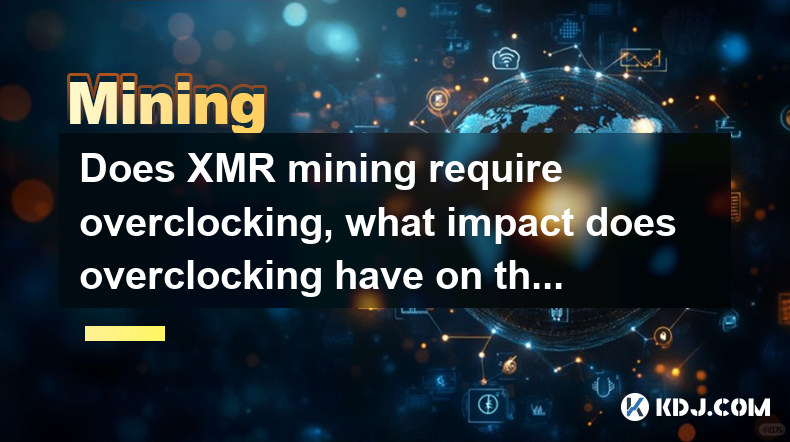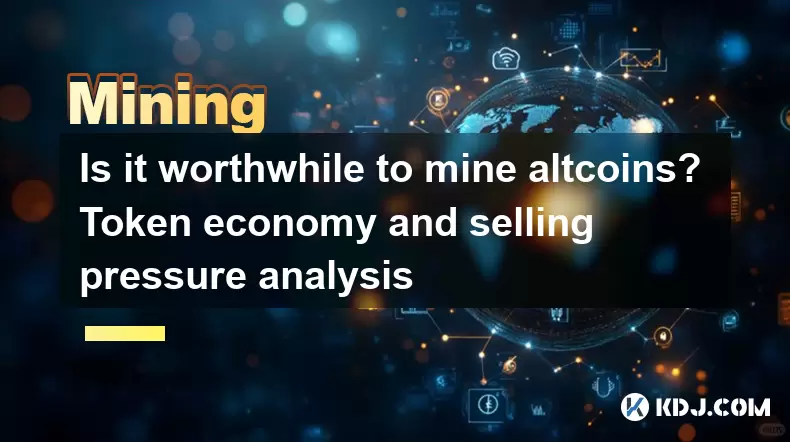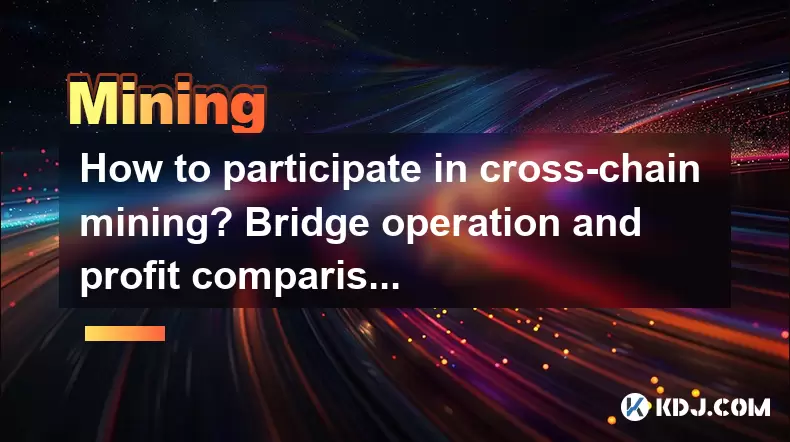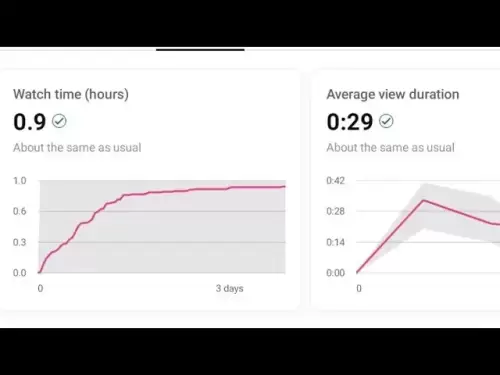-
 Bitcoin
Bitcoin $103,456.1111
0.49% -
 Ethereum
Ethereum $2,414.9631
0.02% -
 Tether USDt
Tether USDt $1.0006
0.05% -
 XRP
XRP $2.1083
0.24% -
 BNB
BNB $634.8760
-0.76% -
 Solana
Solana $139.8437
1.94% -
 USDC
USDC $0.9998
-0.01% -
 TRON
TRON $0.2737
0.97% -
 Dogecoin
Dogecoin $0.1602
0.20% -
 Cardano
Cardano $0.5737
1.08% -
 Hyperliquid
Hyperliquid $32.9779
-2.54% -
 Bitcoin Cash
Bitcoin Cash $474.8886
-1.80% -
 Sui
Sui $2.6272
-1.99% -
 Chainlink
Chainlink $12.4878
0.14% -
 UNUS SED LEO
UNUS SED LEO $8.9234
0.35% -
 Stellar
Stellar $0.2411
-0.18% -
 Avalanche
Avalanche $17.0274
-0.70% -
 Toncoin
Toncoin $2.8936
-1.11% -
 Shiba Inu
Shiba Inu $0.0...01112
-0.58% -
 Litecoin
Litecoin $82.6982
1.33% -
 Hedera
Hedera $0.1423
-0.05% -
 Monero
Monero $314.8455
3.26% -
 Ethena USDe
Ethena USDe $1.0006
0.01% -
 Polkadot
Polkadot $3.4043
1.14% -
 Dai
Dai $0.9999
0.01% -
 Bitget Token
Bitget Token $4.2848
-0.13% -
 Uniswap
Uniswap $6.8748
-5.45% -
 Pepe
Pepe $0.0...09661
0.52% -
 Pi
Pi $0.5359
1.19% -
 Aave
Aave $242.9168
-1.03%
Does XMR mining require overclocking, what impact does overclocking have on the life of the hardware?
XMR mining doesn't require overclocking, but it can boost hash rates; however, it increases heat, power use, and hardware failure risk. Balance is key.
May 02, 2025 at 09:15 am

Does XMR Mining Require Overclocking?
Mining Monero (XMR) does not inherently require overclocking. XMR mining can be effectively conducted using standard hardware settings, especially if you are using dedicated mining hardware like ASICs or specialized GPUs. However, many miners choose to overclock their hardware to increase their hash rates and potentially earn more XMR. Overclocking involves pushing the hardware beyond its default performance limits, which can lead to higher mining efficiency but also introduces certain risks and considerations.
The Impact of Overclocking on Hardware Life
Overclocking can significantly affect the lifespan of your mining hardware. When you overclock, you are essentially forcing your hardware to operate at higher speeds and temperatures than it was designed for. This increased strain can lead to a reduction in the overall life expectancy of your components. Here are some key impacts of overclocking on hardware life:
- Increased Heat Generation: Overclocking generates more heat, and if not properly managed, this can cause thermal throttling or even damage to the hardware. Continuous high temperatures can degrade the components over time.
- Higher Power Consumption: Overclocked hardware consumes more power, which can lead to increased wear and tear on power-related components like power supplies and motherboards.
- Potential for Hardware Failure: The risk of hardware failure increases with overclocking. Components like GPUs and CPUs are more likely to fail prematurely when operated beyond their intended limits.
- Reduced Stability: Overclocking can make your system less stable, potentially leading to crashes and downtime, which can affect your mining efficiency and profitability.
How to Overclock for XMR Mining
If you decide to overclock your hardware for XMR mining, it's important to do so carefully to minimize potential damage. Here is a step-by-step guide on how to overclock for XMR mining:
- Choose the Right Software: Use reliable overclocking software like MSI Afterburner for GPUs or Intel Extreme Tuning Utility for CPUs. These tools allow you to adjust clock speeds and voltages safely.
- Monitor Temperatures: Use software like HWMonitor to keep an eye on your hardware temperatures. Overclocking should not push your components beyond safe temperature thresholds.
- Incremental Adjustments: Increase clock speeds in small increments, testing stability after each adjustment. This helps you find the optimal balance between performance and stability.
- Adjust Voltages: Sometimes, increasing the voltage can help stabilize an overclock, but be cautious as higher voltages can increase heat and stress on the hardware.
- Stress Testing: Use tools like Prime95 or FurMark to stress test your hardware after overclocking. This ensures that your system remains stable under heavy load.
- Cooling Solutions: Invest in better cooling solutions like additional fans, liquid cooling, or better case airflow to manage the increased heat from overclocking.
Balancing Performance and Longevity
When overclocking for XMR mining, it's crucial to balance the desire for increased performance with the need to maintain hardware longevity. Finding the right balance involves understanding the capabilities and limitations of your hardware. Here are some tips to help you achieve this balance:
- Set Realistic Goals: Don't aim for the highest possible overclock if it means risking the stability and longevity of your hardware. A moderate overclock that maintains stability is often more beneficial in the long run.
- Regular Maintenance: Regularly clean your hardware and ensure that cooling systems are functioning properly. Dust and debris can exacerbate heat issues caused by overclocking.
- Monitor Performance: Continuously monitor your mining performance and hardware health. Tools like GPU-Z and HWiNFO can provide detailed insights into your hardware's performance and temperature.
- Adjust as Needed: Be prepared to dial back your overclock if you notice signs of instability or excessive heat. It's better to run at a slightly lower performance level than to risk hardware failure.
The Role of Cooling in Overclocking
Effective cooling is essential when overclocking for XMR mining. Proper cooling can mitigate some of the negative impacts of overclocking on hardware life. Here are some cooling strategies to consider:
- Case Airflow: Ensure that your mining rig or PC case has adequate airflow. Use fans to circulate air and prevent heat buildup.
- Liquid Cooling: Consider using liquid cooling solutions, especially for CPUs and GPUs, as they can more efficiently dissipate heat compared to air cooling.
- Thermal Paste: Regularly reapply high-quality thermal paste to ensure optimal heat transfer between your hardware and cooling solutions.
- Ambient Temperature: Keep your mining setup in a cool, well-ventilated area to help manage overall temperatures.
Overclocking and XMR Mining Profitability
Overclocking can potentially increase your XMR mining profitability by boosting your hash rate. However, it's important to consider the increased costs and risks associated with overclocking. Here's how overclocking can impact your mining profitability:
- Increased Hash Rate: A higher hash rate means you can mine more XMR per unit of time, potentially increasing your earnings.
- Higher Electricity Costs: Overclocking increases power consumption, which can lead to higher electricity bills. Make sure the additional XMR mined offsets these costs.
- Hardware Replacement Costs: The potential for earlier hardware failure means you might need to replace components more frequently, which can cut into your profits.
- Downtime and Stability: If overclocking causes instability or crashes, your mining rig may experience downtime, reducing your overall profitability.
Frequently Asked Questions
Q: Can I mine XMR without overclocking my hardware?
A: Yes, you can mine XMR without overclocking. Many miners successfully mine Monero using their hardware at default settings, especially if they are using ASICs or dedicated mining GPUs.
Q: How often should I monitor my hardware when overclocking for XMR mining?
A: It's recommended to monitor your hardware temperatures and performance at least once every few hours when you start overclocking. Once you find a stable overclock, daily checks can help ensure continued stability and health of your hardware.
Q: Is it worth overclocking for XMR mining if my hardware is already old?
A: Overclocking older hardware can be riskier due to its reduced lifespan and potential for instability. If your hardware is old, consider the potential benefits against the increased risk of failure before deciding to overclock.
Q: What are the signs that my hardware is being negatively affected by overclocking?
A: Signs include frequent system crashes, overheating (temperatures consistently above safe limits), reduced performance over time, and unusual noises from fans or other components. If you notice any of these, it's wise to reduce or stop overclocking.
Disclaimer:info@kdj.com
The information provided is not trading advice. kdj.com does not assume any responsibility for any investments made based on the information provided in this article. Cryptocurrencies are highly volatile and it is highly recommended that you invest with caution after thorough research!
If you believe that the content used on this website infringes your copyright, please contact us immediately (info@kdj.com) and we will delete it promptly.
- Ethereum Price Under Bearish Pressure: Analyzing the Sell Volume Surge
- 2025-06-22 06:45:12
- Texas, Bitcoin, and the Reserve: A Lone Star State of Digital Finance
- 2025-06-22 06:45:12
- Ruvi AI: The Next Binance Coin?
- 2025-06-22 07:05:12
- Navigating the Crypto Storm: Bitcoin, Ethereum, XRP, and the Bearish Sentiment
- 2025-06-22 06:25:12
- XRP ETF Approval: A Cryptocurrency Game Changer?
- 2025-06-22 06:25:12
- Texas Bitcoin Reserve: Adoption, Regulation, and the Lone Star State's Crypto Ambitions
- 2025-06-22 06:55:12
Related knowledge

What is liquidity mining in DeFi? How to participate and calculate the income?
Jun 20,2025 at 03:21pm
Understanding Liquidity Mining in DeFiLiquidity mining is a core concept in the decentralized finance (DeFi) ecosystem that allows users to earn rewards by providing liquidity to decentralized exchanges (DEXs) or lending platforms. In traditional finance, liquidity providers are usually institutional players, but DeFi democratizes this process, enabling...

How to operate option mining? Hedging strategy and profit structure
Jun 21,2025 at 03:29pm
What is Option Mining?Option mining refers to a decentralized finance (DeFi) strategy where participants provide liquidity or take specific derivative positions in options protocols to earn rewards. Unlike traditional yield farming, option mining often involves liquidity provision for options markets, allowing users to generate returns through premiums ...

What are the advantages of Layer2 mining? Gas saving and project inventory
Jun 20,2025 at 04:50am
Understanding Layer2 Mining and Its SignificanceLayer2 mining refers to the process of participating in decentralized applications or protocols that operate on top of a primary blockchain (such as Ethereum) using scaling solutions like Optimism, Arbitrum, or zkSync. Unlike traditional mining on Layer1 blockchains, which often involves high computational...

Is contract mining safe? Key points of smart auditing and vulnerability prevention
Jun 19,2025 at 08:08pm
Understanding Contract Mining in the Cryptocurrency SpaceContract mining refers to a method within blockchain ecosystems where users can participate in mining operations through smart contracts. Unlike traditional mining, which requires physical hardware and technical expertise, contract mining allows participants to invest funds into a mining pool or p...

Is it worthwhile to mine altcoins? Token economy and selling pressure analysis
Jun 20,2025 at 05:21pm
Understanding the Altcoin Mining LandscapeMining altcoins has become an attractive alternative to Bitcoin mining for many cryptocurrency enthusiasts. With Bitcoin's increasing difficulty and energy requirements, miners are seeking opportunities in less saturated markets. However, the profitability of mining altcoins depends on several factors, including...

How to participate in cross-chain mining? Bridge operation and profit comparison
Jun 19,2025 at 05:42pm
What is Cross-Chain Mining?Cross-chain mining refers to the process of leveraging blockchain bridges or interoperability protocols to move assets between different blockchains and participate in yield farming, staking, or liquidity provision across multiple ecosystems. Unlike traditional single-chain DeFi activities, cross-chain mining allows users to o...

What is liquidity mining in DeFi? How to participate and calculate the income?
Jun 20,2025 at 03:21pm
Understanding Liquidity Mining in DeFiLiquidity mining is a core concept in the decentralized finance (DeFi) ecosystem that allows users to earn rewards by providing liquidity to decentralized exchanges (DEXs) or lending platforms. In traditional finance, liquidity providers are usually institutional players, but DeFi democratizes this process, enabling...

How to operate option mining? Hedging strategy and profit structure
Jun 21,2025 at 03:29pm
What is Option Mining?Option mining refers to a decentralized finance (DeFi) strategy where participants provide liquidity or take specific derivative positions in options protocols to earn rewards. Unlike traditional yield farming, option mining often involves liquidity provision for options markets, allowing users to generate returns through premiums ...

What are the advantages of Layer2 mining? Gas saving and project inventory
Jun 20,2025 at 04:50am
Understanding Layer2 Mining and Its SignificanceLayer2 mining refers to the process of participating in decentralized applications or protocols that operate on top of a primary blockchain (such as Ethereum) using scaling solutions like Optimism, Arbitrum, or zkSync. Unlike traditional mining on Layer1 blockchains, which often involves high computational...

Is contract mining safe? Key points of smart auditing and vulnerability prevention
Jun 19,2025 at 08:08pm
Understanding Contract Mining in the Cryptocurrency SpaceContract mining refers to a method within blockchain ecosystems where users can participate in mining operations through smart contracts. Unlike traditional mining, which requires physical hardware and technical expertise, contract mining allows participants to invest funds into a mining pool or p...

Is it worthwhile to mine altcoins? Token economy and selling pressure analysis
Jun 20,2025 at 05:21pm
Understanding the Altcoin Mining LandscapeMining altcoins has become an attractive alternative to Bitcoin mining for many cryptocurrency enthusiasts. With Bitcoin's increasing difficulty and energy requirements, miners are seeking opportunities in less saturated markets. However, the profitability of mining altcoins depends on several factors, including...

How to participate in cross-chain mining? Bridge operation and profit comparison
Jun 19,2025 at 05:42pm
What is Cross-Chain Mining?Cross-chain mining refers to the process of leveraging blockchain bridges or interoperability protocols to move assets between different blockchains and participate in yield farming, staking, or liquidity provision across multiple ecosystems. Unlike traditional single-chain DeFi activities, cross-chain mining allows users to o...
See all articles
























































































